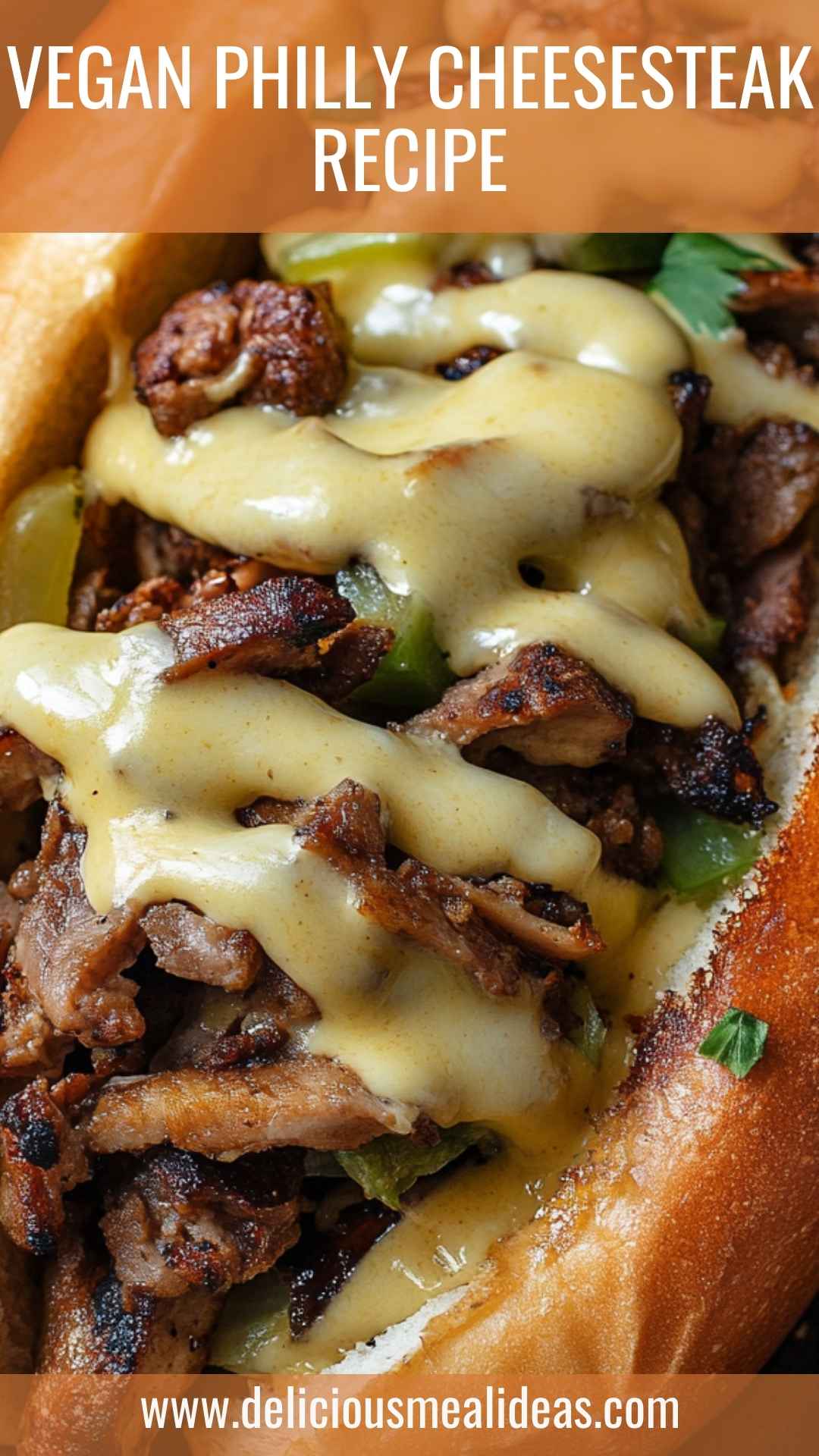When I think about serving coconut curry shrimp, I envision vibrant accompaniments that bring a balance to the spices and flavors of the dish. Ideally, you want something to complement its rich, creamy texture and aromatic spices. Here are some choices:
- Steamed Jasmine Rice: This fluffy white rice soaks up the curry sauce beautifully, making every bite a delight.
- Crispy Naan Bread: Perfect for scooping up the shrimp and sauce, naan adds a wonderful flavor and texture contrast.
- Stir-Fried Vegetables: Simple sautéed veggies like broccoli, snap peas, and carrots can add freshness and crunch.
- Cucumber Salad: A light, tangy cucumber salad with a splash of vinegar can cleanse your palate between bites.
- Roti or Paratha: These Indian flatbreads are a hit and work wonderfully to wrap around the succulent shrimp.
To put it simply, coconut curry shrimp is a versatile dish that can shine with various sides.
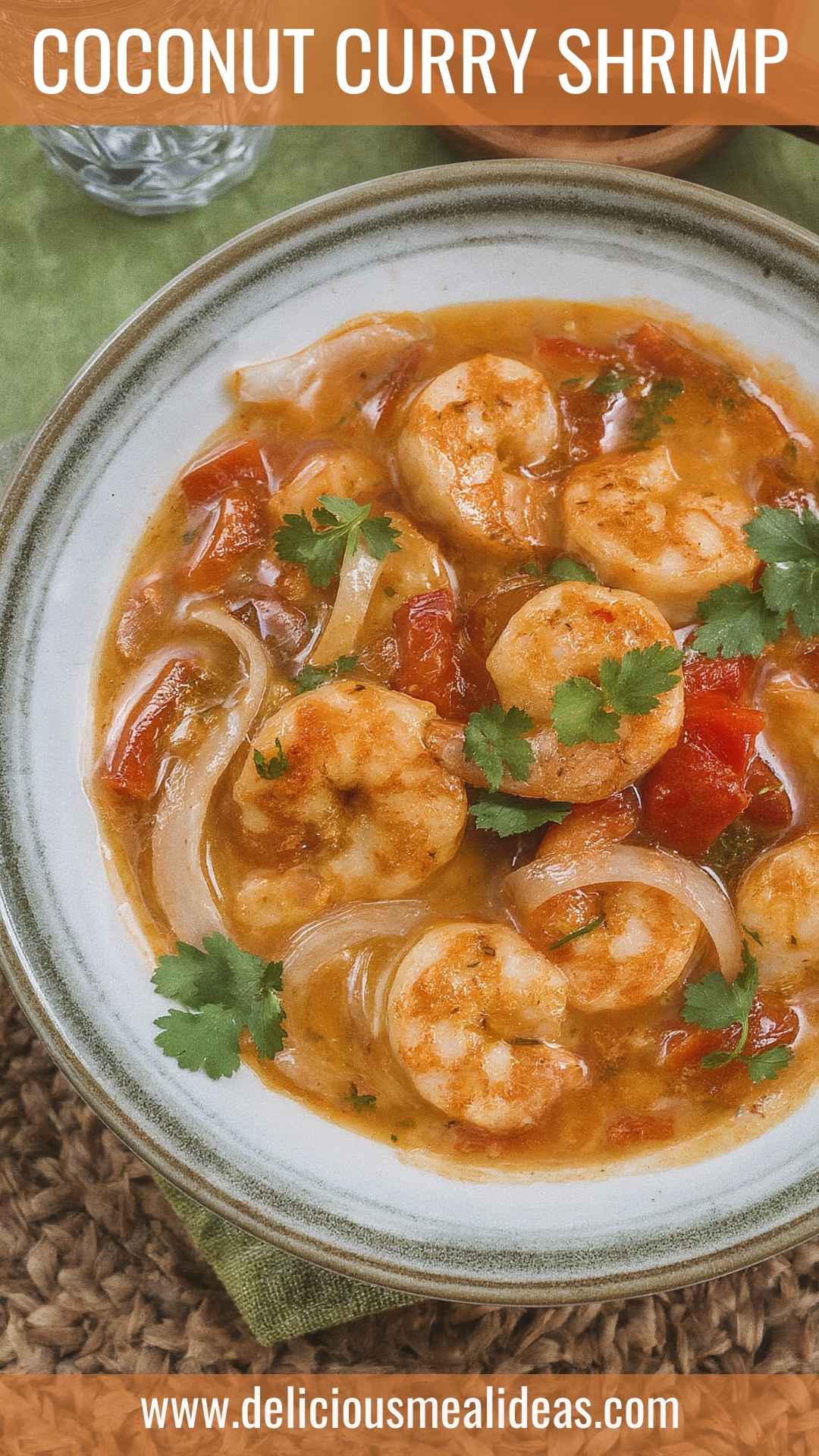
What Is Coconut Curry Shrimp?
Coconut curry shrimp is a comforting dish featuring plump shrimp simmered in a luscious coconut milk and flavored with aromatic spices. Originating from Southeast Asia, this dish beautifully merges the subtle sweetness of coconut with the bold flavors of curry. If you’re looking for a dish that is both satisfying and exotic, look no further.
Not only is it a feast for the eyes, with its inviting colors and textures, but this dish also harmonizes flavors that come together to create an unforgettable meal.
How Does It Taste?
Imagine the moment you take a bite. The first thing you’ll notice is the rich creaminess from the coconut milk. It’s smooth and comforting, like a cozy blanket on a chilly evening.
The shrimp adds a delicate sweetness, while the curry paste delivers a punch of flavor and a bit of heat. Each ingredient plays its part, creating a multitude of taste sensations that dance in your mouth.
Why You’ll Love This Recipe
- Quick to Prepare: You can whip this up in less than 30 minutes!
- Healthy Ingredients: Packed full of shrimp and coconut milk, it’s light while still being filling.
- Totally Customizable: Adjust the heat level and vegetables to suit your palate.
- Makes Great Leftovers: The flavors deepen over time, making next-day meals a delight.
- Perfect for Any Occasion: Whether it’s a regular weeknight or a gathering with friends, this dish fits right in.
Ingredients
To create this mouthwatering dish, you will need the following ingredients:
- ½ red bell pepper, thinly sliced into strips
- 2 garlic cloves, finely minced
- 1 can (13.5 ounces) of creamy full-fat coconut milk
- Juice of ½ fresh lime (this adds brightness)
- 1 pound large shrimp (21/25 count), peeled and deveined
- 1 teaspoon fish sauce (optional, for depth)
- 2 thin slices of fresh ginger root
- 2 teaspoons packed brown sugar or palm sugar
- 2 tablespoons light cooking oil (such as avocado or canola)
- Fresh cilantro leaves, for garnish (optional)
- ½ – 1 can Thai red curry paste (adjust for heat preference)
- 1 medium onion, cut into chunky wedges
- Salt, to taste (optional, adjust as needed)
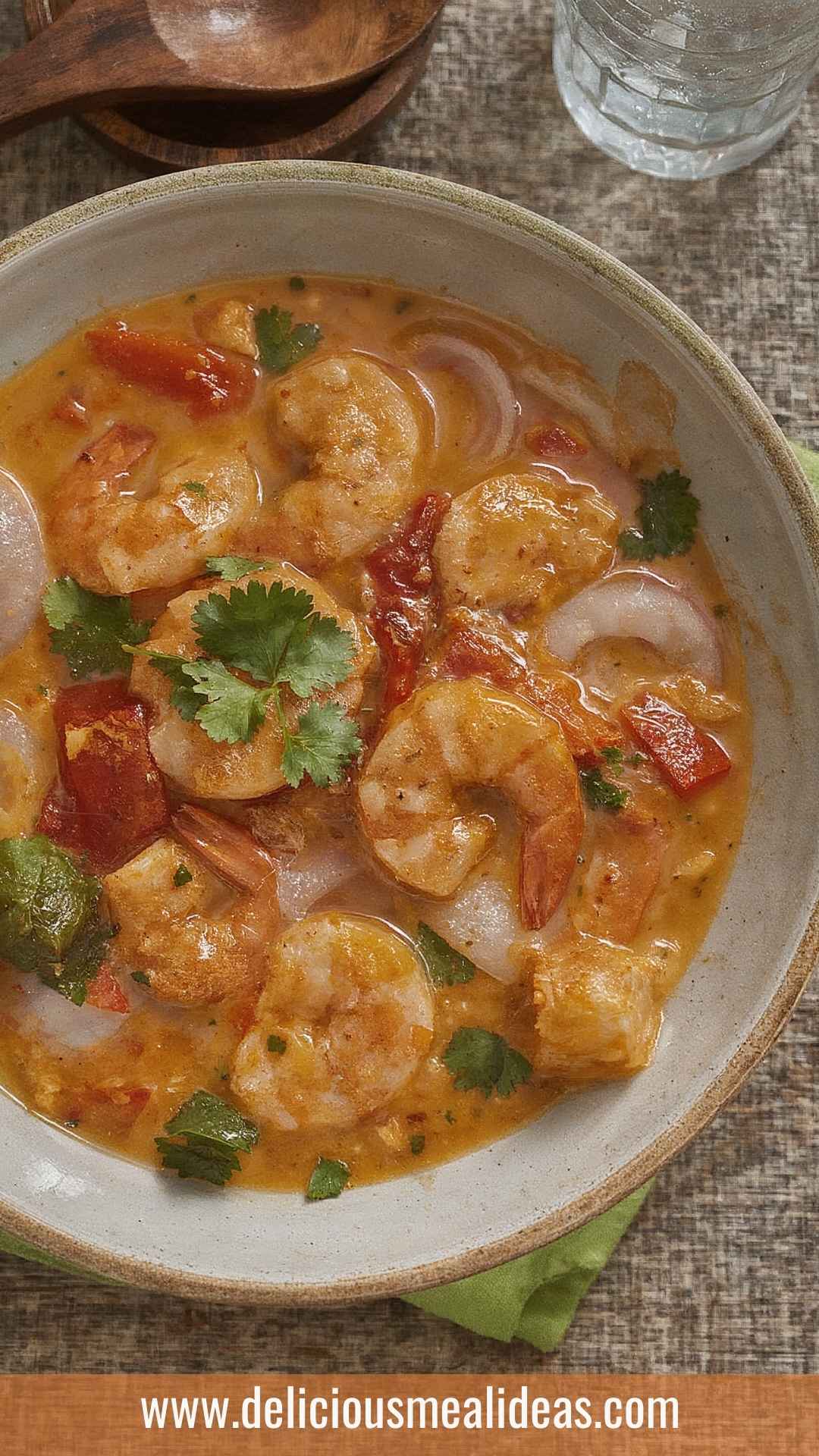
Step-by-Step Directions
Step 1: Prepare Your Shrimp
First, clean and devein the shrimp if not already done. Rinse them under cold water, then pat them dry with paper towels. This step is crucial as it helps the shrimp sear rather than steam in the pan.
Step 2: Sauté the Aromatics
Heat the cooking oil in a large skillet over medium heat. Add the onion and bell pepper. Sauté for about 3-4 minutes until they soften. Next, toss in the minced garlic and ginger slices. Cook just until fragrant, about 1-2 minutes, but don’t let the garlic burn.
Step 3: Add the Curry Paste
Stir in the Thai red curry paste. This is where the magic happens! Allow it to mingle with the aromatics for a minute. You want to release those aromatic oils.
Step 4: Pour in the Coconut Milk
Carefully pour in the coconut milk. Stir well to combine with the sautéed veggies and curry paste. The natural creaminess of the coconut milk will start to take form.
Step 5: Sweeten the Deal
Add the brown sugar and fish sauce (if using) to the skillet. This combination adds a lovely balance of flavors. Allow the concoction to simmer for about 5 minutes to allow the flavors to combine.
Step 6: Introduce the Shrimp
Now, it’s time for the shrimp! Add them to the skillet. Cook for 3-5 minutes until the shrimp turn pink and opaque. Be careful not to overcook; nobody wants rubbery shrimp!
Step 7: Finish it Off
Squeeze the lime juice into the dish for that final touch of brightness. Give everything a gentle stir. Taste and season with salt if necessary.
Step 8: Garnish and Serve
Serve hot, garnished with fresh cilantro leaves. Enjoy your vibrant feast!
Tips for Making Coconut Curry Shrimp
- Use Fresh Ingredients: Fresh shrimp is always preferable. Avoid frozen if possible; they often lack the tenderness and flavor of fresh.
- Adjust Spice Levels: Heat varies by preference. Start with a smaller amount of curry paste and increase it based on your taste.
- Don’t Overcook the Shrimp: Keep an eye on their color. Once they turn pink, they’re done.
- Experiment with Veggies: Bell peppers can be swapped for zucchini or snap peas for added crunch.
- Use Full-Fat Coconut Milk: For richness, opt for full-fat coconut milk. Lower-fat varieties can alter the texture significantly.
Nutrition Information
Per serving (approximate):
- Calories: 350
- Protein: 25g
- Carbohydrates: 12g
- Fats: 24g
This dish is a great source of protein and healthy fats, making it a satisfying meal choice.
How Do You Store Coconut Curry Shrimp?
Coconut curry shrimp can be stored in an airtight container in the fridge for up to 3 days. Just reheat on the stovetop or in the microwave until warmed through. The flavors will deepen, making leftovers equally delightful.
What Other Substitutes Can You Use in Coconut Curry Shrimp?
If you’re missing an ingredient or simply want to switch things up, try these options:
- Chicken: Use the same cooking times as shrimp for tender pieces.
- Tofu: For a vegetarian version, tofu can be a fantastic protein alternative.
- Vegetable Broth: Substitute coconut milk for broth if you want a lighter dish.
- Other Seafood: Scallops or fish fillets can seamlessly replace shrimp.
- Vegetables: Add in your favorite vegetables, like spinach or carrots, for added nutrition.
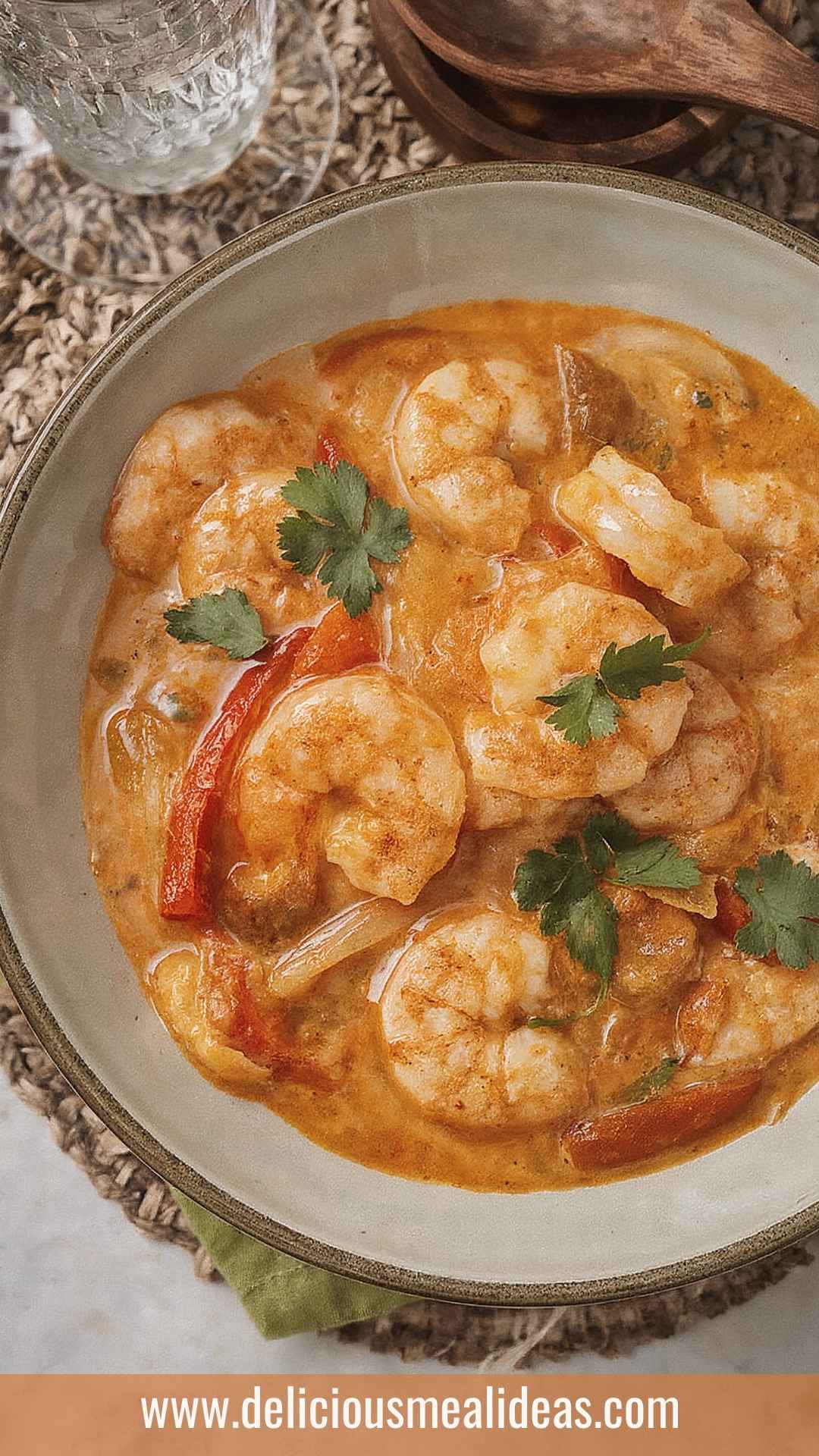
Conclusion
Coconut curry shrimp is not just a meal; it’s an experience filled with rich flavors, vibrant colors, and a whole lot of joy. Whether you’re serving it to family, friends, or savoring it alone, the magic of this dish will surely make you smile. The simplicity of the ingredients and the ease of preparation make it a perfect go-to recipe in your culinary arsenal.
As you dive into this delightful dish, remember that cooking is all about experimentation and joy. So roll up those sleeves, unleash your inner chef, and get ready to wow your tastebuds!
You’ll also like the following Recipes!
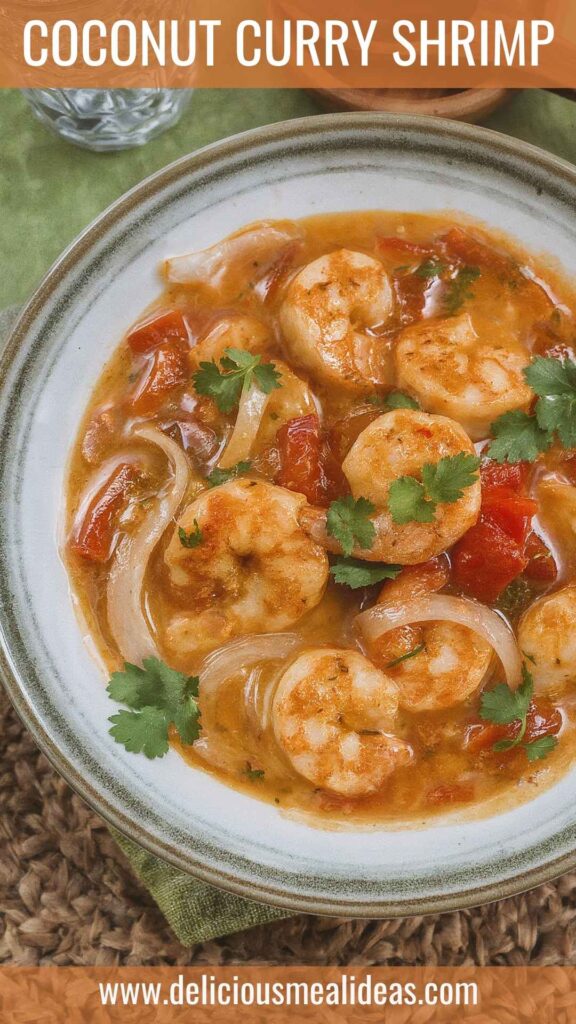
Coconut Curry Shrimp – Delicious Meal Ideas
Description
I can still remember the first time I tasted coconut curry shrimp. It was at a cozy beachside shack, the wind gently tousling my hair as I savored each delectable bite. The shrimp were perfectly cooked, and the coconut milk wrapped everything in a creamy embrace. Since that day, I've made it my mission to recreate that revelation in my own kitchen.
Coconut curry shrimp is much more than a dish. It's a delightful journey that turns a simple meal into a culinary experience. Whether you're cooking for family, friends, or just for yourself, this recipe will surely impress and satisfy. I’ll take you through everything you need to know to transform your kitchen into a vibrant hub of flavor.
Ingredients
Instructions
Step 1: Prepare Your Shrimp
-
First, clean and devein the shrimp if not already done. Rinse them under cold water, then pat them dry with paper towels. This step is crucial as it helps the shrimp sear rather than steam in the pan.
Step 2: Sauté the Aromatics
-
Heat the cooking oil in a large skillet over medium heat. Add the onion and bell pepper. Sauté for about 3-4 minutes until they soften. Next, toss in the minced garlic and ginger slices. Cook just until fragrant, about 1-2 minutes, but don’t let the garlic burn.
Step 3: Add the Curry Paste
-
Stir in the Thai red curry paste. This is where the magic happens! Allow it to mingle with the aromatics for a minute. You want to release those aromatic oils.
Step 4: Pour in the Coconut Milk
-
Carefully pour in the coconut milk. Stir well to combine with the sautéed veggies and curry paste. The natural creaminess of the coconut milk will start to take form.
Step 5: Sweeten the Deal
-
Add the brown sugar and fish sauce (if using) to the skillet. This combination adds a lovely balance of flavors. Allow the concoction to simmer for about 5 minutes to allow the flavors to combine.
Step 6: Introduce the Shrimp
-
Now, it’s time for the shrimp! Add them to the skillet. Cook for 3-5 minutes until the shrimp turn pink and opaque. Be careful not to overcook; nobody wants rubbery shrimp!
Step 7: Finish it Off
-
Squeeze the lime juice into the dish for that final touch of brightness. Give everything a gentle stir. Taste and season with salt if necessary.
Step 8: Garnish and Serve
-
Serve hot, garnished with fresh cilantro leaves. Enjoy your vibrant feast!
Nutrition Facts
Servings 4
- Amount Per Serving
- Calories 350kcal
- % Daily Value *
- Total Fat 24g37%
- Total Carbohydrate 12g4%
- Protein 25g50%
* Percent Daily Values are based on a 2,000 calorie diet. Your daily value may be higher or lower depending on your calorie needs.
Note
- Use Fresh Ingredients: Fresh shrimp is always preferable. Avoid frozen if possible; they often lack the tenderness and flavor of fresh.
- Adjust Spice Levels: Heat varies by preference. Start with a smaller amount of curry paste and increase it based on your taste.
- Don’t Overcook the Shrimp: Keep an eye on their color. Once they turn pink, they're done.
- Experiment with Veggies: Bell peppers can be swapped for zucchini or snap peas for added crunch.
- Use Full-Fat Coconut Milk: For richness, opt for full-fat coconut milk. Lower-fat varieties can alter the texture significantly.



